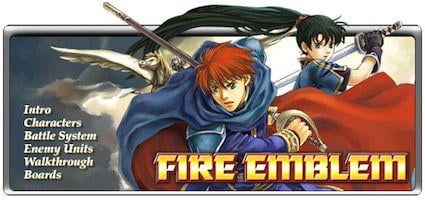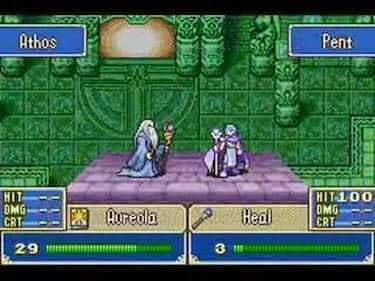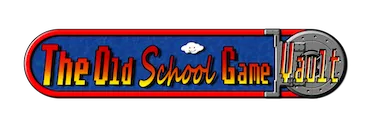Fire Emblem Game Boy Advance Review - GBA
Fire Emblem for the Game Boy Advance has proven itself one of those rare games well able to stand the test of time. The graphics have been surpassed, of course, but Fire Emblem was never primarily about the graphics.
Story and Gameplay that Build on Each Other Keep Fire Emblem Fun
Fire Emblem is a fun turn-based strategy RPG set in a relatively typical fantasy world of magic and dragons, heroes and villains. The turn-based gameplay is relatively easy for a fan of the genre to pick up – different terrain types affect movement and defensibility, there is a paper-rock-scissors-like triangle that determines which weapon and magic types do well or poorly against other weapons and magic, and your party is  made up of easily understood fantasy classes. Weapons (and spell books) degrade over time and must be replaced, which makes cost management and judicious use of irreplaceable powerful weapons/spells an additional tactical consideration.
made up of easily understood fantasy classes. Weapons (and spell books) degrade over time and must be replaced, which makes cost management and judicious use of irreplaceable powerful weapons/spells an additional tactical consideration.
The “support” system
Allows you to make a short-term tradeoff (by using a character’s turn to talk to another character instead of, say, moving and attacking) in exchange for the long-term benefits of statistical bonuses from then on when those two characters are within a few spaces of each other on a battle map. Replayability is enhanced because in a New Game Plus play through, you play much of the game with a new central character (a secondary character in the first play through), experiencing some new levels and other levels that have been changed to increase the difficulty and provide new strategic challenges. The main campaign is also quite long (25-50 hours, depending on your completionist tendencies), giving you substantial bang for your gaming buck.
The core gameplay, the replayability,
And the interesting integration of story and gameplay make it worth revisiting or—an even higher honor, given that nostalgia can be a big part of an old game’s replayability—playing for the first time a decade after its release.
For me, though, Fire Emblem’s most interesting gameplay innovation
Is the use of persistent death: when a character dies in battle, that’s it – you get a dialogue box with the character’s last words indicating death or permanent withdrawal from battle, and then they’re gone for the rest of the game.
Persistent death and the support system integrate the gameplay and story in ways that make both more interesting. The story itself is an enjoyable fantasy plot, but nothing  to write home about. But to the extent that you care about the story, you might find it affecting how you run a battle – do I want to put this character that I care about in danger of dying, or should I play it safer (or sacrifice another character who I don’t like as much)?
to write home about. But to the extent that you care about the story, you might find it affecting how you run a battle – do I want to put this character that I care about in danger of dying, or should I play it safer (or sacrifice another character who I don’t like as much)?
Should I just pursue the battle goals or spend some time developing support (and relationship-developing support conversations) between characters I want to develop both strategically (stat bonuses) and narratives (support conversations and new character endings based on stronger character relationships)?
Story affects gameplay
If you care enough about any of the characters to take that into strategic consideration, and gameplay definitely affects story, because if you get a character killed, that’s where their story ends. Combined with a save system that only saves progress between battles, this can lead to some tough decisions if you lose a beloved character near the end of a brutal battle – do I keep playing without them, or do I restart the whole battle to try to keep this character alive?
How long does it take to play Fire Emblem?
While my play through probably ran about 35 hours, in reality it was several hours longer than that due to my restarting battles when I’d lose a character I cared about. This also added an interesting sense of responsibility when I’d make the cold decision to continue without a certain character that I cared less about and could do without strategically.
Persistent death of developed characters is the main difference between Fire Emblem and the otherwise very similar Advance Wars series. In Advance Wars, only the COs are developed (sort of) as characters, so battle decisions have nothing to do with character development or fate. The tactical units you use are platoons, that can be reduced to partial numbers/strength, wiped out, and replaced by spending your money to produce another, identical unit. In Fire Emblem, each unit is an individual, unique character.
Advance Wars is also a fun game,
I'm sure if you like Fire Emblem, you’ll probably like Advance Wars 2, and vice versa (it's also worth nothing that each game has a GBA sequel offering more of the  same things that made the first games good). Each gets at a different interesting aspect of battle management. Advance Wars highlights the tactical interchangeability of unit types and the cold calculations of acceptable losses.
same things that made the first games good). Each gets at a different interesting aspect of battle management. Advance Wars highlights the tactical interchangeability of unit types and the cold calculations of acceptable losses.
Fire Emblem, on the other hand, highlights the personal aspect – every unit downed is a story ended – so from a story sense it’s the much more compelling game, and the integration of story and gameplay adds an interesting aspect to the model otherwise largely shared with Advance Wars and other turn-based strategy games.
The Conclusion: Is Fire Emblem a Good Game?
The aspect of Fire Emblem that has suffered the most over the years is multiplayer. The multiplayer Link Arena mode, which pits up to five of your characters against those of your friends, is still feasible, but you’d need to round up GBA link cable and some friends interested in the game, which is probably harder now than when the game came out in 2003. Still, multiplayer was a bonus – the main draw of Fire Emblem was the interestingly interwoven gameplay and story aspects in single-player mode. They make Fire Emblem still worth playing today for long-time fans and newcomers alike.

Comments